Cosmonaut Training Center History and Accomplishments
The Soviet Union’s launch of the world’s first artificial Earth satellite on 4 October 1957 and its subsequent achievements in developing rockets and space technology and flying living beings in its space flight program marked the beginning of preparations for the first human spaceflight. The issue of human spaceflight was discussed in the USSR Academy of Sciences as early as the very beginning of 1959. The USSR Council of Ministers Resolution ”On Preparing Humans for Space Flight” was issued on 22 May 1959.
In late 1959, at the initiative of S.P. Korolev, Chief of Rocket and Space Technology Design, a resolution was passed to create a special Center within the Air Force to train humans for the first piloted spaceflight. This Center was given the world famous name of Cosmonaut Training Center (further referred to as the Center). The founding date of the Center is traditionally considered 11 January 1960, when, in accordance with the previously mentioned resolution, the Air Force Commander in Chief published a directive that defined the organizational and personnel structure of the Air Force Cosmonaut Training Center. The site selected for this institution was a picturesque region on the outskirts of Moscow, currently known as Zvezdnyy Gorodok (Star City).
As the challenges confronting Soviet cosmonautics increased in complexity, the Center’s structure and status altered. In 1965, the Air Force Cosmonaut Training Center was renamed the First Cosmonaut Training Center, and in 1968, it was named for the planet’s first cosmonaut, Yu.A. Gagarin. In 1969, it was restructured as the Yu.A. Gagarin Scientific Research and Test Center for Cosmonaut Training and was granted the rights and status of a category 1 scientific research institute. In 1995, by Russian Federation (RF) Government Resolution, the former Gagarin Training Center and the 70th Individual Testing and Training Special Purpose Aviation Regiment were merged to create the Gagarin Russian State Scientific Research And Testing Center for Cosmonaut Training under the jurisdiction of the Russian Ministry of Defense (Air Force) and the Russian Aviation and Space Agency. The objective of this merger was to increase the efficiency with which the RF’s scientific and technological potential in the area of piloted space flight and cosmonaut training was used to implement federal space programs and meet Russia’s international commitments (Fig. 1).
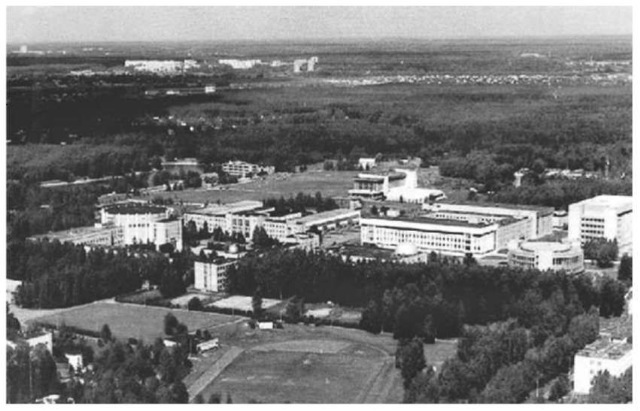
Figure 1. The Center (bird’s eye view).
Starting with Yu.A. Gagarin, the first person on Earth to fly in space, all Soviet, and then Russian cosmonauts, and also many cosmonauts and astronauts from foreign countries were trained and certified for space travel at the Cosmonaut Training Center. The most significant numerical indicators of the Center’s performance are thus the flights and training of cosmonauts. Between 1961 and 2000, 90 crews and 125 cosmonauts flew on Russian spacecraft and space stations. Of these, 71 cosmonauts flew once, 27 twice, 21 three times, 3 four times, and 3 five times. Thirty-three flights included citizens of 18 foreign countries (Austria, Afghanistan, Bulgaria, Cuba, Czechoslovakia, France, Germany, Hungary, India, Japan, Mongolia, Poland, Rumania, Slovakia, Syria, the United Kingdom, the United States, and Vietnam.) The Center trained a total of 326 prime, backup, and reserve crews (a total of 447 cosmonauts of whom 78 were foreigners) for the flight programs of Russian spacecraft and stations.
Each year, on average, 24 cosmonaut candidates went through general space training, 22 cosmonauts underwent group training, and 12 crews (prime, backup, and reserve) underwent crew training at the Center. Cosmonauts were trained for the flight programs of the Vostok, Voskhod, and Soyuz spacecraft and the Salyut, Almaz, and Mir long-term orbital stations, the lunar program, and programs for testing the Energia-Buran space shuttle system and advanced aerospace systems. At the present time, crews are being trained for the International Space Station program.
Selection of the first cosmonauts began in October 1959 among men in Air Force units. It was believed that the best candidates for the first piloted spaceflight would come from the ranks of military pilots. Documents for more than 3000 fighter pilots, aged 35 or below, were examined to select the first cosmonaut candidates. On the basis of interviews and outpatient medical examination, 206 pilots were allowed to move on to the medical selection phase. These candidates then underwent a final inpatient examination between October 1959 and April 1960. Only 29 pilots passed all phases of medical selection and, of these, 20 were accepted into the spaceflight training program (subsequently, requirements for cosmonaut health standards were relaxed somewhat).
The first group of cosmonauts trained at the Center included Yu.A. Gagarin, who completed an orbital flight of 1 hour 48 minutes on the Vostok-1 piloted spacecraft on 12 April 1961. After Gagarin’s flight, G.S. Titov was trained to perform a 1-day space flight. This flight was completed in August 1961.
The next phase of the Center’s activity focused on training cosmonauts for group flights. In August 1962, A.G. Nikolayev and P.R. Popovich completed the first such flight on Vostok-3 and Vostok-4. The program of training cosmonauts for flights on the Vostok series spacecraft was completed with the flights of B.F. Bykovskiy on Vostok-5 and the first female cosmonaut, V.V. Tereshkova, on Vostok-6 between 16 and 19 June 1963. The completion of the Vostok program provided a unique experience in training of cosmonauts for piloted flights.
Subsequently, the Center entered a phase in which cosmonauts were trained for flights on the multiman piloted spacecraft of the Voskhod series, which had just been developed. Training these crews emphasized the use of the new capabilities these spacecraft had for conducting scientific, technological, and biomed-ical experiments and enabling extravehicular activity. Only two flights were made within the Voskhod program. The first flight, on Voskhod-1, was piloted by a crew consisting of V.M. Komarev, commander, K.P. Feoktistov, flight engineer, and B.B. Egorov, physician. The second flight, on Voskhod-2, was piloted by P.I. Belyayev, commander, and A.A. Leonov, copilot. During the second flight on Voskhod-2, on 18 March 1965, the first space walk (by A.A. Leonov) was completed.
In 1966 Center specialists began to train cosmonauts in a program involving testing and a series of flights on the new multiperson, multipurpose piloted spacecraft of the Soyuz series, which possessed technical capacities that significantly exceeded those of Vostok. One of the main goals of cosmonaut training here was to enable mastery of spacecraft approach and docking — key operations in the use of long-term orbital piloted stations designed for long periods of living and working in space.
At the same time (1966-1971) as cosmonauts were being prepared for piloted flights on Soyuz, the Center was providing training for flight programs on other types of spacecraft. Thus, between 1966 and 1968, cosmonauts were trained for long-term (up to 10 days) flights on Voskhod series spacecraft. In 1966, a separate group of cosmonauts was formed for training on the program for the Spiral aerospace system (device-50). Crew training on this program was discontinued in the early 1970s, and the cosmonauts in it were transferred to training for flights in the Soyuz and Soyuz-VI, as well as for the Salyut and Almaz space station programs.
During these years, the Center began actively training cosmonauts for translunar flights and lunar landing (lunar programs: 7K-L1, N1-L3) programs, which continued until the early 1970s. Work on the lunar programs is little known to the general public because these flights were never implemented. The group being trained for these programs included 15 military pilots, 7 specialists from industry, and 4 scientists from the USSR Academy of Sciences. A.A. Leonov and V.F. Bykovskiy were named the commanders of the first crews. Based on the results of crew training, the Air Force command concluded that they were ready to complete a flight to the Moon.
During this same period, the Center was training cosmonauts on programs for orbital flights on Soyuz-7K-OK, Soyuz-VI-7K-VI, the Salyut long-duration space station, and the Almaz space station. Crew flights on the first long-duration space station, Salyut, began after it was inserted into orbit on 19 April 1971. After this, the Center’s mission included training cosmonauts for long-duration spaceflights.
In 1972, it was decided to begin targeted training of crews for flights on the Almaz space station program, developed under the direction of the General Designer, Academician, V.N. Chelomey. In September 1972, ground-based tests of the Almaz station began, including tests of its thermal control and life support systems, which required long periods of confinement by the Center’s cosmonauts and observers in a facility simulating the conditions of spaceflight. The first Almaz station was inserted into orbit in early 1973, but, after several days of unpiloted flight, it lost pressurization, and the crew that was all set to fly had its orders canceled. Crews began to be trained for flights on the next station.
The second Almaz manned station (launched as Salyut-3) was successfully inserted into orbit on 25 June 1974, and the third (called Salyut-5) began its flight on 22 June 1976. The Almaz program comprised five flights, and three crews lived and worked on the stations (one on Salyut-3 and two on Salyut-5). In 1977, the flights in this program were suspended. The official decision to cancel the Almaz program was not made for a number of years. Throughout this period, the Cosmonaut Training Center continued to train crews for the Almaz program until the early 1990s. Cosmonauts who had been assigned to this program were on ”active standby” status until 1984. The flight of Salyut-5 marked the culmination of a major phase of work associated with the development, testing, and practical validation of the first generation of space stations.
While the Almaz stations were operating, the Center was also training crews for the Salyut program. Because the 3 April 1973 launch of the next station in this program, Salyut-2, was unsuccessful (all of the propellant the station carried was expended during the first orbital pass), crews designated for flight on Salyut were transferred to the international Apollo-Soyuz experimental program, based on a U.S.-U.S.S.R. agreement signed in May 1972) for a joint spaceflight. Four crews were formed for this flight. For the first time, instructors and cosmonauts at the Center had to train both their own and U.S. crews for a spaceflight at their own facility and at the U.S. Apollo-Soyuz base. During the training process, major difficulties arose as a result of the language barrier and the constraints imposed by the security restrictions of that time period.
On 26 December 1974 the Salyut-4 long-duration space station was launched; two crews lived and worked on it. The Apollo-Soyuz project culminated in the successful docking and joint flights of Soyuz-19 and Apollo 18 between 15 and 21 July 1975. The prototype of the first international manned space station was thus assembled in orbit.
Since that time, the Center has been directly involved in tasks related to cosmonaut training and piloted spaceflight implementation as entailed by international collaboration. This type of collaboration was continued in the Inter-kosmos program. In the fall of 1976, the first group of candidates for Interkosmos program flights arrived for space station flight training in Star City from Czechoslovakia, East Germany, and Poland. A second group, which arrived in 1978, consisted of citizens of Bulgaria, Hungary, Vietnam, Cuba, Mongolia, and Rumania. These groups consisted primarily of pilots who had been trained in the Soviet Union’s military academies or military flight schools. Interkosmos program flights began in 1978.
On 29 September 1977, the first of the new (second) generation space stations (Salyut-6) was inserted into orbit. The Center began plan-driven work to train cosmonauts to use this station for scientific research and industrial applications, especially those associated with the study of Earth in the interests of the economy and environmental protection. The fact that the station had two docking ports enabled a significant increase in the number of manned flights (because they made it possible for prime and visiting crews to work together on the station). This required intensifying the cosmonaut training process as well. The Center’s success in solving problems related to cosmonaut training for long-duration spaceflights made it possible to set successive records for crew flight duration, of 96 days, 140 days, 175 days, and 185 days. Flights on Salyut-6 terminated in May 1981. A total of five prime crews had lived and worked on this station. These crews had been joined by 11 visiting crews. The Salyut-6 program included 16 piloted flights, of which 9 were Interkosmos flights. For its significant contribution to implementation of long-duration spaceflights and Interkosmos flights, the Center was awarded the Order of Friendship Among Peoples.
On 19 April 1982, the long-duration space station Salyut-7 was placed in orbit to replace Salyut-6. Six prime crews were trained for and flew on Salyut-7. Four visiting crews were trained for the station. Training for flights on Salyut-7 took place in 1986.
Starting in the second half of the 1970s, the Soviet Union actively worked on developing the Buran space shuttle. It was successfully tested in the unmanned mode on 15 November 1988 (launch from the Baykonur Cosmodrome, insertion into the predetermined orbit by the Energia booster rocket, a flight of two Earth orbits, prelanding maneuvers, and landing in automated mode on the landing strip at Baykonur). From 1979 up to the termination of this program in 1995, the Cosmonaut Training Center periodically trained (refresher course) cosmonaut candidates for Buran flights. A total of more than 20 people underwent such training.
The most intensive and large-scale training of cosmonauts was conducted as part of the 15-year implementation of the Mir Space Station program. The station’s core module was inserted into orbit on 20 February 1986. The Mir station differed from previous stations by virtue of the fact that it had six docking ports, two along the long axis of the station and four perpendicular to it. The presence of six docking ports made it possible to assemble a scientific research complex in orbit from a number of modules, each of which had its own functional purpose. One of these modules had the capacity to dock with the U.S. Space Shuttle. From 8 September 1989 to 28 August 1999, the Mir station operated continuously in manned mode. The crews relieved each other in flight. The station was equipped with unique scientific instrumentation and experimental apparatus (more than 240 setups with a total weight of approximately 11.3 tons), which had been developed in 27 nations. Between 1986 and the moment the Mir station ceased to exist (23 March 2001), 28 prime crews were trained and flew on that station. These crews had as members 35 Russian cosmonauts, 7 U.S. astronauts, and 1 crewmember each from the European Space Agency and France. In addition to the prime crews, Mir was visited by 16 visiting crews who remained from 1 week to 1 month; of these, 15 crews were part of a program of international collaboration with participants from Syria, Bulgaria, Afghanistan, France (5 crews), Japan, United Kingdom, Austria, Germany (2 crews), the European Space Agency, and Slovakia. A total of 104 cosmonauts and astronauts lived and worked on the station, including 62 foreign nationals (from 11 countries and the European Space Agency). These cosmonauts performed more than 23,000 scientific experiments and research studies on the station as part of national and international programs. In accordance with the Mir-NASA program, 9 visiting crews were transported to the station on Space Shuttles, including 37 U.S. astronauts. The total duration of the flights of foreign cosmonauts on Mir was 4.3 years, which represents 32% of the total time the station functioned in manned mode. The Mir Space Station served as a unique testing ground for developing of technological processes associated with training international crews, and for developing international cosmonaut training systems, which have subsequently been applied in the International Space Station program.
Starting in 1993, pursuant to Russia’s international commitments to develop and use the International Space Station, the Center has been participating directly in training cosmonauts and astronauts to support the International Space Station Program.
Objectives, Structure, and Technical Facilities of the Yu.A. Gagarin Russian State Scientific Research and Testing Cosmonaut Training Center
As space technology developed, the conditions of spaceflight changed, more practical experience was gained, and the goals, structure, and technical facilities of the Center continually underwent adjustment and change. Now, the Center is organized into the following divisions: the cosmonaut corps, the professional and biomedical cosmonaut training, the scientific research and testing divisions and laboratories, the flight divisions, the prototype production divisions, a special separate aviation test and training regiment, and the support divisions. These are the main areas of Center activity:
* to serve as the lead organization for selecting cosmonaut candidates and training cosmonauts in all categories and specialties for flights on any spacecraft, developing and improving cosmonaut training systems, medical support of cosmonaut training and cosmonaut postflight rehabilitation, and developing and deploying technical devices (technical facilities) for cosmonaut training;
* to provide general spaceflight training to cosmonaut candidates, to provide group and crew training, to support and upgrade trainee qualifications, and to train foreign astronauts (cosmonauts);
* to conduct fundamental, exploratory, and systems research, development work and scientific testing to improve the quality of cosmonaut training, the efficiency of spacecraft crew performance, and spaceflight safety; and to advance spaceflight technology and the development of Center technical facilities;
• to participate in flight tests of spacecraft, ergonomic evaluations, and scientific and technical oversight tracking of the development and use of piloted spacecraft;
• to train and certify scientific work forces;
• to participate in developing of Russian Federation policies regarding space exploration, to draft proposals for inclusion in the Federal Space Program of Russia, to develop draft regulations on issues relating to space exploration, and to draft collaboration agreements with foreign countries in the area of space exploration, and to perform public relations functions publicizing Russia’s achievements in spaceflight research and applications.
Cosmonaut candidates are selected from among Russian Federation citizens who have expressed the desire to participate in spaceflights and who meet the established professional and medical requirements. Individuals who pass the special selection process are accepted into the cosmonaut team of the Russian Federation (Center) and appointed to the position of candidate cosmonaut pilot or candidate mission specialist. Candidate cosmonaut pilots are selected from among fighter pilots, pilots, and other specialists who have received higher technical education in the area of space technology. Candidates for mission specialist are selected from among scientists, engineers, physicians, and military and other specialists who have academic training and appropriate professional skills for implementing scientific research and experimental programs on spaceflights.
When the professional selection system was developed, one of the initial tenets was that cosmonaut selection is a continuous process, based on a systematic evaluation of candidates’ health, physical and psychological qualities and educational level by using a set of methods for social, educational, medical, and psychological selection. Social selection methods include analyzing and evaluating an individual’s moral and ethical qualities, as well as motivations, interests, needs, intragroup relationships, resistance to social pressure, and ability to adapt to a new social environment. Educational selection involves analyzing and evaluating the level of knowledge, skills, and professional experience a candidate has acquired to prepare for learning the chosen profession of cosmonaut. Medical selection is directed at identifying individuals whose health status and physical fitness would permit them to function as cosmonauts. Psychological selection methods are intended to identify the presence and strength of the set of personality traits that are required for becoming a cosmonaut and are conducive to successful mastery of this profession.
Cosmonaut training for flights involves three phases:
* general spaceflight training for cosmonaut candidates;
* training cosmonauts in groups based on specialization, types of piloted spacecraft, or area of activity;
* training designated cosmonaut crews (prime, standby, and backup) for spaceflight on specific piloted spacecraft.
Cosmonauts on the cosmonaut team, who have not been included in a group or crew and whose health status meets the standard requirements, periodically undergo short refresher courses according to a specially developed training curriculum to maintain their knowledge, skills and abilities at the requisite level. The major objective of general spaceflight training for cosmonaut candidates is to ensure their mastery of the principles of cosmonautics and related fields and their acquisition of the capacity to become cosmonaut pilots or mission specialists. The major objective of cosmonaut group training is to improve their professional qualities, their specialization in particular types of spacecraft or areas of work, monitor their status and maintain their health, and also maintain high performance capacity. The major objective of cosmonaut crew training is to ensure that crews are prepared to complete the flight program on a specific spacecraft. This sequence of training phases is mandatory for everyone. Candidates receive general spaceflight training once; however, they may pass through the other training phases more than once.
These are the goals of the first cosmonaut training phase:
• to learn the theoretical principles underlying cosmonautics;
• to study the design and principles of construction of the basic spacecraft, its utility, and special-purpose systems and equipment;
• to gain an overview of systems on a piloted spacecraft;
• to learn the principles for conducting tests, research, and experiments on board a piloted spacecraft;
• to learn about international legal standards for the use of space;
• to gain experience with the effects of dynamic spaceflight factors;
• to acquire theoretical knowledge and the elementary practical skills for working in spacesuits;
• to acquire theoretical knowledge and elementary practical skills for EVAs;
• to develop practical skills for landing in various extreme climatic or geographical areas;
• to undergo flight and parachute training;
• to undergo a series of biomedical measures and exercises directed at monitoring status, maintaining and strengthening health, and identifying the individual psychophysiological characteristics of each cosmonaut candidate;
• to learn how to ensure the safety of spaceflight.
These are the goals of the second phase of cosmonaut training:
* to study the design, layout, and onboard systems of specific piloted spacecraft;
* to develop skills needed to work with onboard systems and scientific equipment;
* to develop skills needed to perform flight procedures and the components of the flight program;
* to master generic operations for EVA;
• to develop skills for performing generic operations involved in technical maintenance, repair, and inventorying of equipment;
* to undergo medical measures directed at maintaining cosmonauts’ good physical condition and functional psychophysiological capacities, high performance level for professional tasks, and practical skills for diagnosing illnesses and conditions and providing medical aid to themselves and other crew members.
These are the goals of the third phase of cosmonaut training:
* to study the design characteristics of a specific piloted spacecraft, its systems, scientific and specialized equipment, and also guidelines for using them;
* to study the program for the scheduled flight, onboard documentation and documents regulating crew interactions with ground control and flight support groups.
* to improve skills and develop abilities to control a spacecraft and use its systems and equipment during all flight phases in standard and contingency modes;
* to gain practical mastery of flight program components;
* to acquire experience with interactions among crew members and between the crew and ground control groups;
* to undergo medical measures directed at ensuring a state of good health, high crew performance capacity, and readiness to perform the biomedical section and flight program as a whole.
Training of cosmonaut candidates and cosmonauts has the following forms:
* study of theoretical disciplines, designs, and the principles of construction of a piloted spacecraft and its utility and special purpose systems and equipment;
* practical exercises and training on training simulators of various types and purposes, aircraft, test stands, mock-ups, setups, airborne laboratories, underwater laboratories, centrifuges, and barochambers;
* participation in tests of space technology, research, and performance of expert evaluations (Figs. 2 and 3).
The list of types of cosmonaut training (relevant to all phases) includes
* technical training;
* comprehensive and specialized training on simulators and test stands for teaching control of spacecraft and transport vehicles and use of onboard systems and equipment;
* flight and special parachute training;
* biomedical training;
* training under simulated spaceflight conditions;
* mastery of the set of life support system components for cosmonauts in an artificial environment;
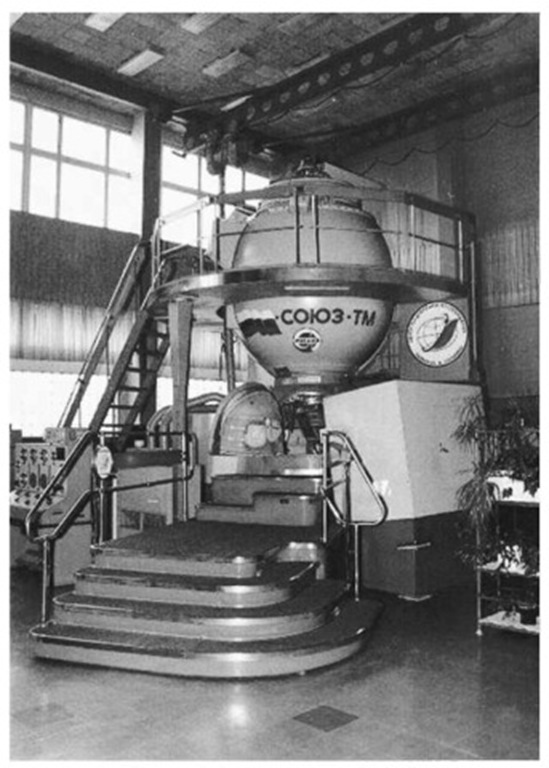
Figure 2. Soyuz Transport Spacecraft mock-up.
• comprehensive training in the EVA program;
• training in performing applied scientific research and experiments;
• training in navigational and ballistic support of spaceflight (space navigation);
• training to use movie cameras, television cameras, and to work with the onboard videotape system;
• training in what to do upon landing in various extreme climatic and geographic conditions;
• training in the operations involved in technical maintenance and repair of spacecraft and their onboard systems;
• training in controlling space robotic systems and manipulators;
• training in onboard and flight documentation, flight programs, and rules for structuring crew work on board;
• training to perform experimental work and testing of spacecraft and their systems;
• training in what to do in contingency (emergency) situations;
• psychological training;
• humanitarian training (legal, linguistic, culture-specific training, and training for symbolic activity).
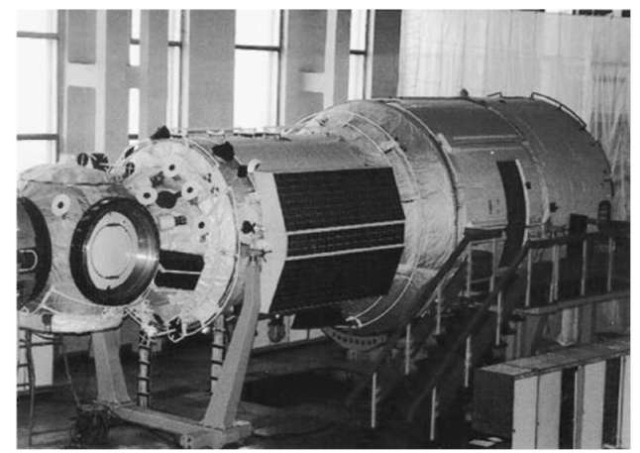
Figure 3. Mock-up of Russian section of the International Space Station.
All phases of cosmonaut candidate and cosmonaut training are held at the Center facilities. If necessary for training cosmonauts, the technical devices of other organizations and businesses are brought in on a contractual basis.
The Center’s facilities consist of equipment, which can be grouped on the basis of their function or purpose. These are the most important:
1. Comprehensive trainers simulating transport spacecraft and space station modules to foster mastery of all flight programs on transport spacecraft and space stations, under standard conditions and in various contingency and emergency situations, including performance of repairs.
2. Specialized trainers simulating transport spacecraft and space station modules to simulate individual phases, operations, and modes of flight (trainers simulating approach, berthing and docking the spacecraft with an orbital station, including remote control and manual control of the trajectory for atmospheric reentry using a centrifuge, control of robotic, space-suit, life support, and airlock decompression systems).
3. Simulators of space and spaceflight conditions.
* CF-18 centrifuge (18-meter rotational arm, maximum G-force of 30 G, maximum G-force gradient of 5G/s, replaceable cabins simulating spacecraft work stations), designed for physiological studies and cosmonaut (pilot) training in tolerance of G-forces controlled with respect to magnitude and direction under conditions of altered microclimate (pressure, temperature, humidity, and atmospheric composition), and for testing aerospace technology and performing experiments (a specialized dynamic trainer simulating manual control of reentry of the Soyuz TMA spacecraft with deceleration conditions created by the CF-18 centrifuge) (Fig. 4);
* CF-7 centrifuge (7-meter rotational arm, maximum G-force of 10 G, maximum G-force gradient of 7 G/s, replaceable work station in the cabin), designed for training and study of human tolerance of various types of G-force (a specialized dynamic trainer simulating manual control of reentry of the Soyuz TMA spacecraft under exposure to deceleration created by the CF-7 centrifuge base);
* underwater laboratory (pool diameter of 23 meters, height of 12 meters, number of windows: 45, capacity of platform on which mock-ups are placed: up to 8 tons), for training cosmonauts for EVAs under conditions ofsimulated weightlessness in an underwater environment and for developing methods for training cosmonauts and testing space technology (Fig. 5);
* aircraft laboratories:
(a) Il-76MDK-2, designed for flights creating short periods of weightlessness and decreased weight for training spacecraft crews, conducting biomedical research, and testing equipment (can create weightlessness lasting up to 28 seconds; on one flight can generate periods of weightlessness up to 20 times during a flight of 1.5-2 hours) (Fig. 6);
(b) Tu-154M-LK-1 and Tu-134LK, designed for training cosmonauts on navigation and orientation and conducting research on natural and artificial objects on Earth’s surface using remote sensing) (Fig. 7);
* outer space planetarium for classes and training on the stars in the sky and development of cosmonaut skills in celestial navigation and celestial orientation (the planetarium reproduces 9000 stars and makes it possible to simulate stars at altitudes up to 500 kilometers with a variation of angular velocities of rotation of the star field in increments of 0.002-5.07s with a reproduction error of angular distances between stars of 12 arc minutes);
* ”Dry Land” and ”Ocean” special training simulators (specially equipped mock-ups of reentry modules) for training cosmonauts to survive after emergency reentry module landings in various climatic and geographic areas;

Figure 4. CF-18 centrifuge.
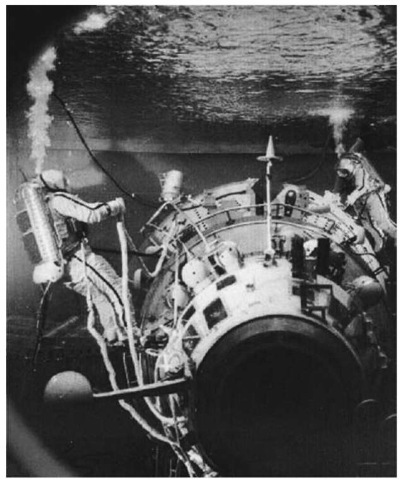
Figure 5. Cosmonaut training in an underwater environment.
• a set of instruments and equipment for biomedical cosmonaut training;
• means for flight (training aircraft) and special parachute training;
• SBK-80 stationary barochamber (the main chamber has a volume of 7.5 m3 with work space for four people; the pressure differential chamber is 1.8 m3 in volume with work space for one; the maximum atmospheric rarefaction created is 41 mmHg, which corresponds to 20 km above sea level, the ascent time to 12 km is 100 seconds, and the emergency altitude decrease time from 20 km to 0 kilometers is not less than 10 seconds), designed for altitude training of cosmonauts under ground-based conditions to evaluate their physiological tolerance of rarefied atmospheres, and for conducting medical research and testing of life support systems.
The training simulators for the Russian portion of the International Space Station are a flexible, expandable set of programmable hardware devices for various training configurations developed on the basis of crew training tasks, as well as the evolution of the International Space Station in the process of its assembly and use. The training complex for the modules of the Russian station segment are being created phase by phase (add-on method) as the flight prototypes are developed.
The devices used for cosmonaut training also include actual space technology and apparatus prototypes, life size mock-ups of spacecraft, stations and their modules, various research and functional simulation stands, a training simulator facility and devices for physical and medical cosmonaut training, and reproduction of equipment and communications devices using personal computer training systems.
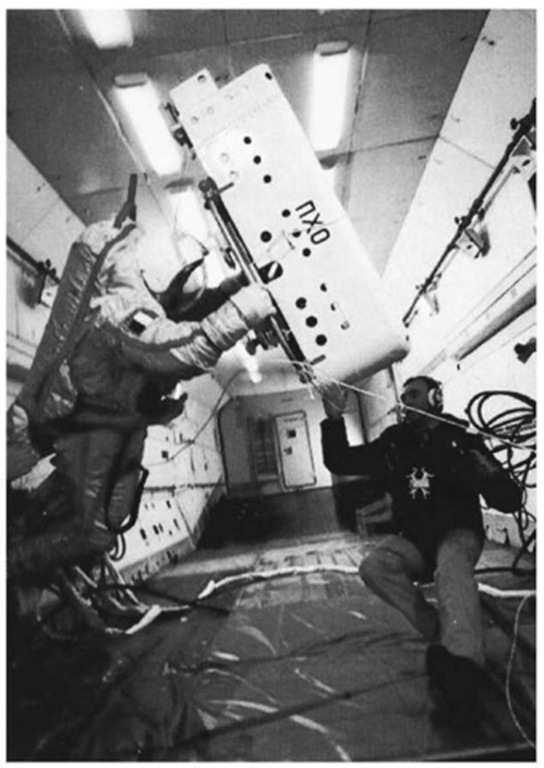
Figure 6. Cosmonaut training under conditions of simulated weightlessness in an aircraft.
In addition to Center equipment and facilities, cosmonaut training may use equipment belonging to other organizations and departments (the test stand facilities of organizations that develop piloted spacecraft and their systems, equipment belonging to the Cosmodrome and the Flight Control Center, search and rescue equipment, Naval vessels and Air Force helicopters, and equipment belonging to experimental and research organizations). International collaboration has required that training also use equipment from foreign countries and international organizations participating in joint international space programs.
Center activity is not limited to training cosmonauts for flight. During the 30 years of its existence, the Center has performed more than 1500 tests of various devices. The Center has participated in 93 flight tests and development tests of piloted spacecraft and conducted 260 tests of cosmonaut training technology and various other equipment. Approximately 450 testing and research studies were performed on flying laboratories under conditions of simulated weightlessness (involving more than 1600 flights, during which weightlessness was produced approximately 14,000 times).
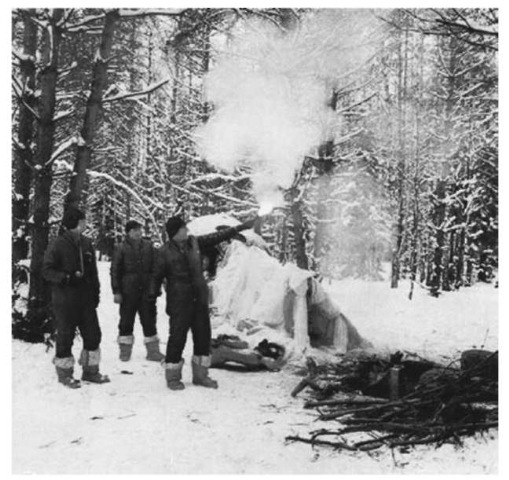
Figure 7. Cosmonaut training after reentry module landing.
